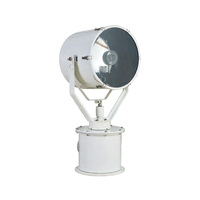Categories
Tags
-
#LED Submarine Navigation Lights
#Stealth Major Light
#LED Marine Cabin Lights
#LED Marine Navigation Signal Lights,Marine Spotlights,Marine Searchlight,
#Explosion-proof fire Emergency Lights
#LED Marine Navigation Signal Lights
#Explosion-proof Fluorescent Pendant Lights
#Marine Reading Lights
#Marine Navigation Lights
#LED Light
#LED Marine Lights
#Marine LED Lights
#Marine Searchlight Bulb
#Marine Searchlights
#Explosion Proof Lighting
#LED explosion proof lighting
#Marine Waterproof Switch and Sockets
#Boat Cabin Lighting
#Marine Spotlights
#Marine Floodlights
#marine cabin lighting
#LED Soft Light Strips
#Marine Navigational Lights
#f Marine Searchlights
#Morse Code Signal Light
#Ship Stern Lights
#Ship Cabin Lighting Fixtures
#LED Marine searchlights
#Explosion Proof Lights
#marine Explosion Proof Lights
#Explosion-proof lights
#Navigation Lights
#Marine Lighting
#CCS Certification
#LED Explosion Proof Flood Lights
#Installing Marine Searchlights
#Marine Explosion-Proof Light
#marine searchlight
#LED marine searchlight
#High-Power Marine Searchlights
#Yushuo
#Marine Light
Archives
The Impact of Excessive Power Marine Searchlights on Ships
-
Marine searchlights are essential auxiliary devices. They are used for night navigation and special environments. These devices enhance visibility. They assist in lookout and navigation. However, marine searchlights with excessive power can have a variety of adverse effects on ships themselves and the surrounding environment, as detailed below:

Impact on the Ship Itself
Increased Electrical System Load
High-power marine searchlights consume a large amount of electrical energy. This places a significant burden on the ship's electrical system. If the ship's generator does not have sufficient power, the continuous operation of high-power searchlights may lead to generator overload. Overheating and even damage can also occur. In addition, this may disrupt the normal power supply of important equipment on the ship. Such equipment includes navigation and communication devices. This, in turn, affects the ship's normal navigation.
Interference with Lookout and Navigation
The intense light from high - power marine searchlights can interfere with the night vision adaptation of the crew. In night - time or low - visibility conditions, the crew's eyes need some time to adapt to the dark environment. This adaptation is necessary to clearly see distant objects and signal lights. If exposed to the intense light of high - power searchlights for a long time, the crew's eyes may temporarily be blinded. They might also experience blurred vision. This will seriously affect the lookout effect and judgment of the surrounding navigation environment. In addition, the intense light from high - power searchlights may overshadow the ship's own navigation lights. This makes it difficult for other ships to accurately determine the ship's position, heading, and intentions. Consequently, it increases the risk of collision.
Increased Risk of Equipment Damage
High - power marine searchlights generate a large amount of heat when in operation. Poor heat dissipation can lead to overheating. This may damage the searchlight components such as bulbs and reflectors. In addition, excessive power may also cause overheating and short - circuiting of the electrical circuits of the searchlights, further affecting the service life and reliability of the searchlights.
Impact on the Surrounding Environment and Other Ships
Optical Interference and Misjudgment
The intense light from high - power marine searchlights can interfere with the lookout and navigation of other ships in the vicinity. When the light beam from the searchlight shines on other ships, it may cause glare to the crew. This glare affects their observation and judgment of the surrounding environment. In low - visibility conditions, this interference may lead to misjudgment by other ships. They may misjudge the position and movement of the ship. This increases the risk of collision. In addition, the light beam from high - power searchlights might be confused with the lights on the shore. It can also be mistaken for the signal lights of other ships. This further disrupts the normal navigation order.
Impact on Marine Life
The intense light from high - power marine searchlights can interfere with marine life. Some marine creatures are sensitive to light, and strong light may interfere with their normal activities, migration, and reproduction. For example, sea turtles may be attracted by the strong light and deviate from their normal migration routes. The nocturnal activities of some fish and marine mammals may also be disturbed, thereby having an adverse impact on their survival and reproduction.
The power of marine searchlights should be reasonably configured according to actual needs and relevant regulations. When using searchlights, the crew should strictly follow the operating procedures. They should avoid unnecessary long-term use. They must try to reduce interference with other ships and the surrounding environment. At the same time, ships should regularly inspect and maintain the searchlights and related electrical equipment. This ensures their normal operation and the safe navigation of ships. It also helps reduce the impact on the surrounding environment.

